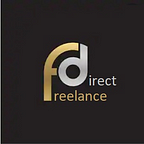Is MVP still an option for Entrepreneurs and Start-ups
A minimum viable product (MVP) or first release is described as a product with the least or enough features to satisfy the initial customer’s enquiries than can provide feedback for future development from the data received from those enquiries.
This methodology morphed onto Minimum Viable Experience (MVE) and Minimum Awesome Product (MAP) and I have even seen a Riskiest assumption test or (RAT). All of these concepts belong to the Lean Startup methodology.
MVE, or the Minimum Viable Experience (MVE) is an MVP done right. In building an MVE, the focus is shifted from the features to the customer’s experience.
The MVE also serves the Build-Measure-Learn purpose, but, in this case, you are aiming to build a minimum usable product that gives your users an easy and intuitive experience. The idea is that customers do not care about your analytics, nor the features that you so carefully selected for your MVP. What they care about is the way they experience your product or service.
When building an MVE, select the features that form a complete user experience and make sure that they work as close to perfect as possible. The features should create a full user journey, achieving the main goal of the product. When you choose the features, consider what customers may expect in a product of this kind and what they consider essential.
Minimum Awesome Product, and is also worth considering if you want to test your product hypothesis. “Awesome” means just that a product that customers will call awesome. A MAP is what customers expected from products in 2018.
MAP is an evolution of MVP and a way of preventing your MVP from being too “minimal”. Nowadays, users are already very user experience savvy, and a website with a white background and one “Subscribe” button. However, this does not mean you should go to the other extreme and load your MVP with lots of fancy animations or other special effects.
A MAP is an MVP considered from the point of view of today’s expectations of “minimal. The main distinction of a MAP when compared to an MVP is that the MAP may have a slightly wider set of features, and consider user interface and user experience design as well. Of course, the MAP approach may turn out to be somewhat more expensive, but the result is usually worth it. At the end of the day, in 2018, users are not what they were ten or twenty years ago.
A RAT is explicit. There is no need to build more than what is required to test your largest unknown, no expectation of perfect code or design, and no danger it will prematurely become a product.
An MVP seduces with false reassurances of a clear, linear path to an optimized solution. A RAT puts the focus on learning. It is a light in the darkness that allows us to move forward one step at a time. Once you’ve validated the riskiest assumption you can move on to the next one, gradually building confidence in the viability of your idea.
But this is where the trouble can start, does it solve a big enough problem or is the market big enough and are customers willing and able to pay an amount that exceeds your total cost to produce that product or service.
This problem becomes even more daunting if you are in the digital market and after rushing your product to the market quickly if the time to develop and produce a finished solution can be achieved in an appropriate time with the funds that you have without getting further investment for the next stage if you are using a lean start-up methodology?
For a smaller business instead of something that may turn out to be a Unicorn, the plan should be to provide enough value so customers will pay. It DOESN´T matter if it is the best product on the planet and is deemed viable.
In reality, an MVP is not a validation tool. It might have been perceived as one a few years ago. But the times have changed. Now it serves a different purpose — the goal of the MVP is to collect feedback and improve the design of the product in an agile and fast way based on the data provided by early adopters and key market individuals.
The validation part should have been done way beforehand. Personal experience and research suggest the three stages to move forward are:
1. Establish a reliable method to collect Market Intelligence.
2. Produce a test sample as quickly as possible.
3. Test the strategy with a large group of interested patrons.
The qualification process needs to be a potential customer-focused and increasingly data-driven process so that you know what the leading competitor is doing and why their product or service is doing so well.
Carry out a thorough social assessment of your audience.
What are the dynamic´s of the market and are there any trends.
Consider the major brand’s voice and relevant service agreements.
Even the benefits of your solution against what a customer has already.
MVP was peddled as a validation method, but nowadays it is about the trend line presentation
(https://sciencing.com/write-linear-regression-equation-8446204.html) from real-life collected data so that ROI can be calculated.
It is now possible with available tools out there in the market today to help build audiences, analyse market opinion without building a product or instead of listening to your assembled team or self-build.
If you require any advice on Entrepreneurship, Freelancing or Start-ups, please contact www.freelancedirect.net
Sources:
